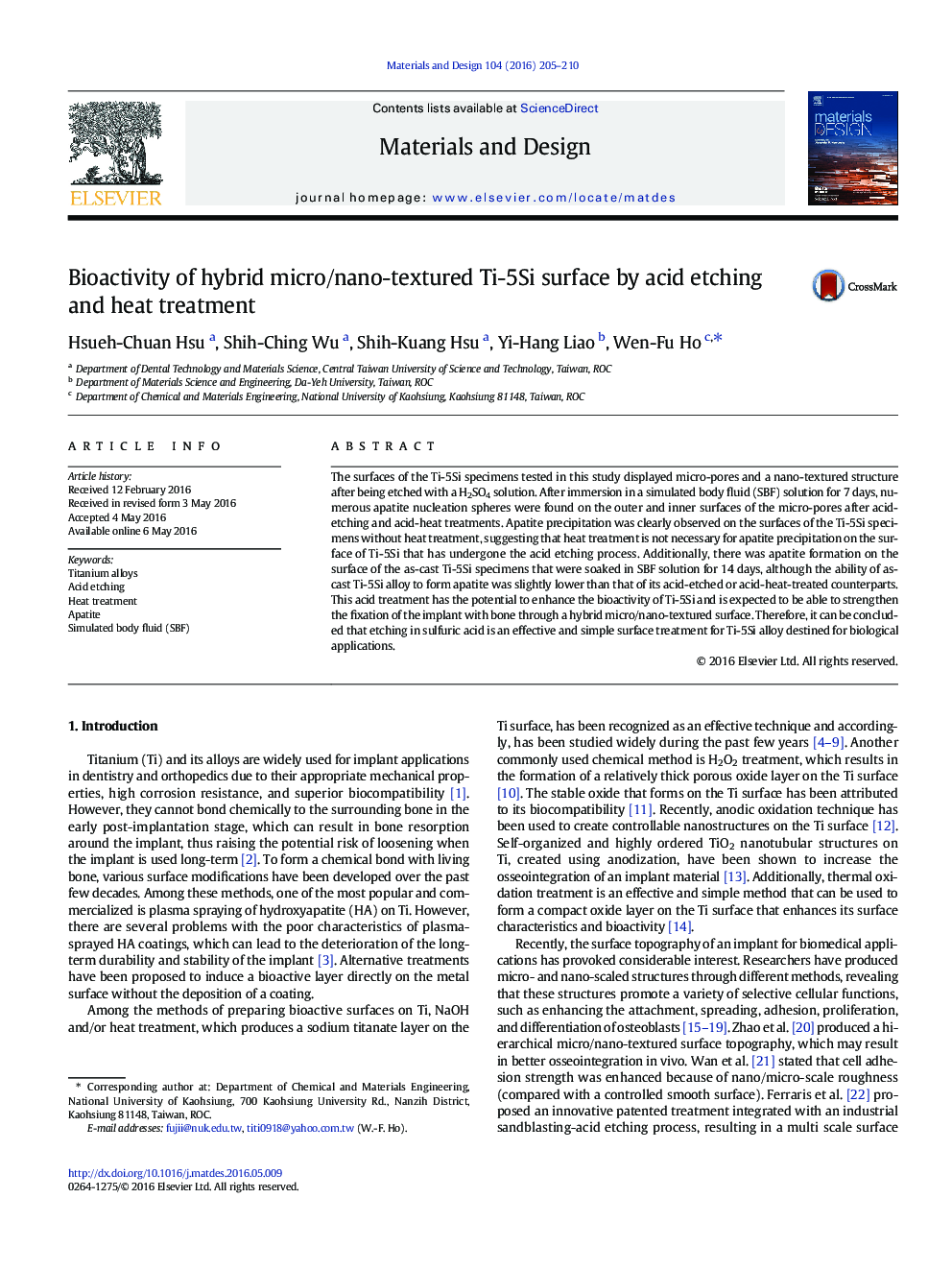| Article ID | Journal | Published Year | Pages | File Type |
|---|---|---|---|---|
| 827936 | Materials & Design | 2016 | 6 Pages |
•The acid-etched Ti-5Si exhibited nano-textured surfaces with uniformly distributed micro-pores.•The H2SO4 acid treatment induces a bioactive Ti-5Si surface with anatase and rutile TiO2.•Apatite precipitation was observed on acid-etched Ti-5Si surface with or without heat treatment after immersion in SBF.
The surfaces of the Ti-5Si specimens tested in this study displayed micro-pores and a nano-textured structure after being etched with a H2SO4 solution. After immersion in a simulated body fluid (SBF) solution for 7 days, numerous apatite nucleation spheres were found on the outer and inner surfaces of the micro-pores after acid-etching and acid-heat treatments. Apatite precipitation was clearly observed on the surfaces of the Ti-5Si specimens without heat treatment, suggesting that heat treatment is not necessary for apatite precipitation on the surface of Ti-5Si that has undergone the acid etching process. Additionally, there was apatite formation on the surface of the as-cast Ti-5Si specimens that were soaked in SBF solution for 14 days, although the ability of as-cast Ti-5Si alloy to form apatite was slightly lower than that of its acid-etched or acid-heat-treated counterparts. This acid treatment has the potential to enhance the bioactivity of Ti-5Si and is expected to be able to strengthen the fixation of the implant with bone through a hybrid micro/nano-textured surface. Therefore, it can be concluded that etching in sulfuric acid is an effective and simple surface treatment for Ti-5Si alloy destined for biological applications.
Graphical abstractFigure optionsDownload full-size imageDownload as PowerPoint slide
